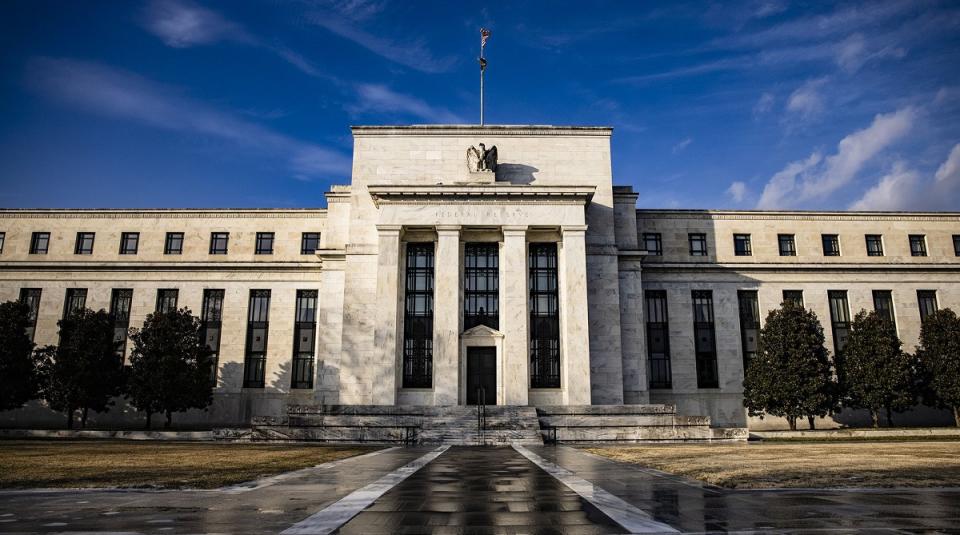Buy dips 'very selectively', remain diversified and buy gradually over coming months amid sharp drop in US stocks: OCBC

US stocks saw their worst day in over two years on Sept 13.
OCBC’s executive director of investment strategy Vasu Menon has advised investors looking to buy stocks on dips should do so “very selectively”.
Menon’s advice comes after US stocks fell sharply on Sept 13, after US consumer prices rose unexpectedly in August. The higher-than-expected increase cemented bets for a third straight 75-basis point rate hike from the US Federal Reserve (US Fed) next week.
On Sept 13, stocks saw their worst day in over two years. The Dow Jones Industrial Average (DJIA) fell by 3.9%, while the S&P500 declined by 4.3%. The tech-heavy NASDAQ Composite Index slid by 5.2% as rate-sensitive tech stocks took a beating.
In August, the US’s consumer price index (CPI) gained 0.1% m-o-m from July, against expectations of a 0.1% dip. August’s CPI saw a y-o-y increase of 8.3%, surpassing economists’ expectations of a 8.1% growth.
Excluding the volatile food and energy components, core CPI increased to 6.3% from 5.9% in July and higher than expectations for a 6.1% gain. The higher-than-expected figures have put further pressure on the Fed to continue its rate-hike spree.
“While headline inflation has eased in the past two months, core inflation is on the rise, confirming the very sticky nature of the US inflation problem,” says Menon.
As interest rate hikes look set to continue, Menon adds that investors should remain diversified in this time and buy into stocks gradually over the coming months instead of trying to time the markets.
“The US central bank is clearly caught between a rock and hard place. Bringing inflation down from the current 8.3% to its 2% target won’t be easy. There is a risk that the Fed will miscalculate, and its aggressive rate hikes may cause a deeper US recession compared to the technical recession in the first half of this year,” he writes.
“Rising inflation and interest rates have clearly hurt markets. Both global equities and bonds are down sharply so far this year. This is unusual because in the past 25 years, there were only two times that both global equities and bonds fell at the same time. So, what we are seeing now is exceptional. It reflects the highly uncertain investment environment and a slew of worries about the outlook. And these worries will not go away anytime soon. It will take time to get better clarity,” he adds.
Meanwhile, Mathieu Racheter, head of equity strategy research at Julius Baer says earnings estimates for US stocks will likely continue to be adjusted downwards, with a recovery in FY2023 being "still too optimistic".
At the same time, higher real rates are keeping valuations at bay, he adds."Moreover, as we are entering the second phase of a growth shock and associated adjustment in forward earnings, we expect a pickup in the equity risk premium, which has so far remained relatively stable year-to-date. During past downturns, the equity risk premium on average increased by 0.75%. For now, we recommend staying defensively positioned."
While US equities saw their worst one-day return following the higher-than-expected CPI print on Tuesday, Racheter notes that the "expensively valued and cyclical parts of the market suffered the most, while defensives as well as the oil & gas sector offered some shelter in relative terms."
"The VIX index, Wall Street’s fear gauge, climbed to 27.2, the highest reading since mid-July," he adds.
After the selloff on Sept 13, the 12-month forward P/E of the S&P500 is back at 17.4x, below its 10-year average of 18.3x, according to Julius Baer's estimates.
"As we previously noted, we considered the recent rally from the mid-June lows a typical bear market rally, driven by hopes of an early Fed pivot in its monetary stance. Usually, bear market rallies seldom come alone: On average, there were three rallies of roughly 9% in each equity bear market before a new bull market emerged," says Racheter.
"Historically, the troughs in the seven previous bear markets since the 1970s were reached only when the Fed started to cut rates. An easing in inflationary pressure later this year will allow the Fed to broaden its focus again in order to manage the economic slowdown. However, we are not there yet."
The DJIA closed Sept 13 at 31,104.97 points, while the S&P500 closed at 3,932.69 points. The NASDAQ Composite Index closed at 11,633.57 points on the same day.
See Also:
Click here to stay updated with the Latest Business & Investment News in Singapore
Straits Times Index rebounds, strengthens against global markets
'Inflation fever' is finally breaking — but central banks won't stop hiking rates
Get in-depth insights from our expert contributors, and dive into financial and economic trends

 Yahoo Finance
Yahoo Finance 